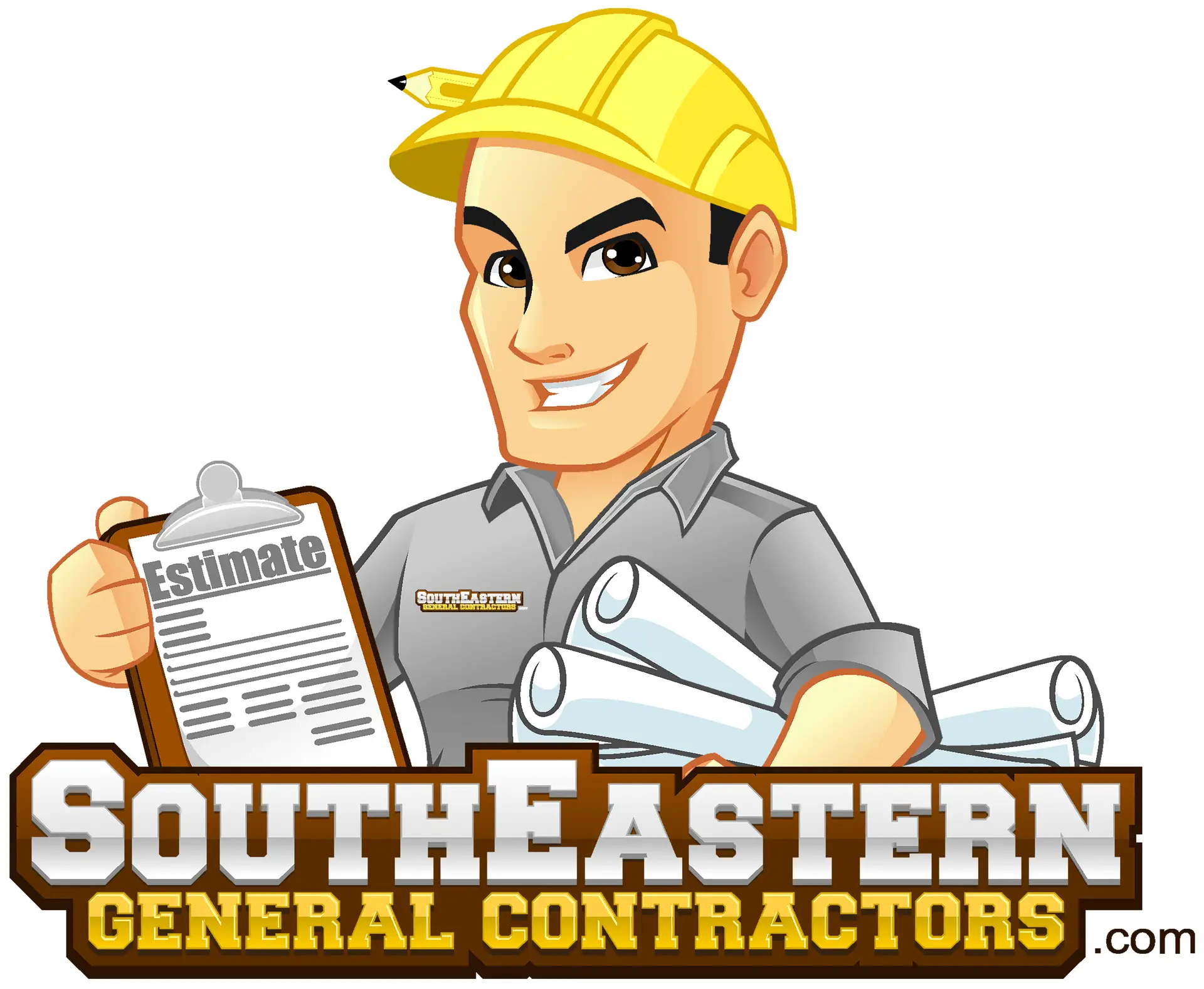
Mastering Construction Material Tracking Software: An SEGC Guide
Let's be honest: every time a pallet goes missing or a bundle of conduit vanishes into thin air, it’s a direct hit to your project's bottom line. That’s exactly why construction material tracking software exists. It’s not some fancy tech for the sake of tech; it’s a tool forged in the fires of job site frustration, designed to give you a real-time view of your materials—from the moment you order them to the second they’re installed. For us at SEGC, it's about turning the usual on-site chaos into a process you can actually control, ensuring we build with the quality and trust our clients expect.
Why Material Chaos Is Costing You More Than You Think
We've all been there: the frantic phone calls trying to find a shipment, the project grinding to a halt over a missing component, and the budget spiraling out of control. When you don't have a firm grip on your inventory, it's more than just a headache; it’s a serious threat to your business. After 21+ years of proven results running projects in our local communities of Fayetteville and Lumberton, we at SEGC learned a long time ago that getting your materials organized is the first, most critical step to a successful build.

This isn't just a local problem, either. It’s a challenge plaguing the entire industry, and it's fueling a massive shift toward better solutions. The market for this kind of software is blowing up, with experts predicting it will grow at a 15% Compound Annual Growth Rate (CAGR) between 2025 and 2033. Why? Because everyone is finally getting serious about efficiency and cutting down on waste. You can see the full story in recent market analytics findings.
The Real-World Pain of Bad Tracking
Let's face it, those old-school spreadsheets and dusty clipboards just can't hack it on a modern construction site. The fallout is as predictable as it is expensive:
- Schedules Get Wrecked: Your crew shows up, ready to work, but the materials they need are either late or lost somewhere on-site. Now what? That's a day of lost productivity.
- Budgets Implode: When items are misplaced or damaged, you’re forced into last-minute reorders, often paying a premium and torching your profit margins.
- Labor Costs Bleed Out: There’s no faster way to lose money than paying a full crew to stand around waiting for a delivery.
- Your Reputation Takes a Hit: Missed deadlines and constant disorganization make clients nervous, and that’s the kind of thing that costs you future work.
As a Native American-owned, 8(a), and HUBZone certified company, our commitment to quality is everything. It pushes us to find smarter, more efficient ways to work. That mission begins with knowing exactly what we have and precisely where to find it.
Ultimately, getting a handle on material chaos is about driving supply chain efficiency across the board. By putting a solid system in place, we’re not just building structures; we’re living up to our mission of building lasting legacies.
Pinpointing Your Real Material Tracking Needs
Jumping into a software demo without a clear plan is like pouring a foundation without blueprints. You might end up with something, but it probably won’t be the right thing for your company. Before you even glance at a piece of construction material tracking software, you have to get painfully honest about the real-world problems you’re trying to solve.
Here at SEGC, our local leadership team has learned over 21+ years that buying tech for tech's sake is a waste of money. A tool is only a solution when it fixes a specific, tangible problem. For most construction firms, the biggest issues aren't flashy; they’re the nagging, everyday frustrations that quietly bleed your budget dry and throw schedules into chaos. A solid needs assessment is the only way to make sure your investment actually pays off.
Audit Your Current Material Flow
First things first: walk through your entire process, from the moment an order is placed to the second that material is installed. Where are the cracks? A simple, honest audit will quickly expose the bottlenecks that are costing you a fortune.
Think about these common headaches we see on projects all over our Fayetteville and Lumberton communities:
- Late Deliveries: How often are your crews standing around waiting for materials? That’s not just a delay; it's money down the drain in labor costs.
- Improper Storage: Are expensive materials getting ruined by rain because they were left uncovered? Or damaged because they were shoved into a crowded corner of the site?
- Material Theft: Let’s be real—do high-value items just… disappear? Those unplanned reorders add up faster than you can imagine.
This is the classic downward spiral of material mismanagement that can tank a project's profitability.
Each one of these stages is a leak in your project's financial boat. Pinpointing where you're taking on the most water is the whole point of this exercise.
Create a Simple Needs Checklist
Your goal isn't to find the software with a million bells and whistles. It's to find the one that solves your biggest headaches. So, build a straightforward checklist based on what you found in your audit. Forget the fancy tech jargon for a minute and frame your needs as simple, direct questions.
As a Native American-owned and HUBZone-certified firm, accountability is everything. It’s how we build trust. That process starts with taking an honest look at ourselves to see how we can be better for our clients.
For instance, your checklist might include questions like:
- Do we absolutely need to track materials across multiple job sites at the same time?
- Is barcode or QR code scanning a must-have for our field crews to actually use this thing?
- How big of a deal is it for this software to play nice with our existing accounting or project management tools?
- Do we work with specialized materials that require tracking and documentation for compliance reasons?
Answering these questions gives you the blueprint you need to start looking at vendors. It completely changes the conversation from "buying a product" to "solving a problem"—a mindset that has been fundamental to SEGC's success and helped us build legacies, not just structures.
Choosing the Right Software Partner
The market for construction material tracking software is packed, and every vendor will try to sell you the dream. But cutting through that noise means focusing on what actually helps your crew on the job site, not just what looks good in a sales demo. Picking the right software is like choosing a key subcontractor—you’re looking for a long-term partner. It’s a philosophy we live by when building client trust here at SEGC.

Don't underestimate this decision. The global market for this kind of software is on track to hit $3.5 billion by 2025, which tells you just how essential these tools have become. When you look at the bigger picture of construction tech, it’s obvious that tools for managing costs and resources are where the smart money is going.
Look Beyond the Shiny Features List
A long list of features is useless if the software is a pain for your team to use in the field. Your evaluation has to be about practicality and making sure this tool will still be the right one five years from now.
Here are the real deal-breakers to focus on:
- Rock-Solid Security: Your project data is gold—material costs, delivery schedules, you name it. You need a partner who takes security seriously and can prove it.
- Scalability for Growth: Will this software grow with you? Make sure it can handle more projects, more users, and a more complicated inventory as your business expands.
- Field-First Design: Is the mobile app actually usable? Can a superintendent check in a delivery on a muddy site with gloves on? If it's a headache for the folks in the field, it will never get used.
- Responsive Support: When things go sideways—and they will—you need a support team that understands construction and can give you a real solution, fast. Not just a generic help ticket.
The Integration and Partnership Litmus Test
The real magic happens when a new tool clicks perfectly into your existing workflow. A system that can’t talk to your other software just creates more manual entry and more headaches.
As a Native American-owned and HUBZone-certified company, accountability is in our DNA. We pick partners who share that same commitment to trust and quality, whether it's a software provider or a subcontractor. We’re building something that lasts, and that requires dependable partners on every level.
When you're vetting vendors, don't be afraid to ask the tough questions about integration. Can it connect to your accounting software to make invoicing a breeze? Does it play nice with the best construction project management software you already rely on?
To help organize your thoughts, a simple checklist can work wonders. It forces you to compare apples to apples and keep your priorities straight.
Vendor Comparison Checklist
| Feature/Criteria | Vendor A | Vendor B | Vendor C | Notes/Importance |
|---|---|---|---|---|
| Ease of Use (Field) | High – Must be simple for crew | |||
| Integration Capabilities | Critical – Needs to sync with our PM tool | |||
| Customer Support | High – Need 24/7 phone support? | |||
| Scalability | Medium – Can it handle 50+ projects? | |||
| Security Protocols | Critical – Ask for certifications | |||
| Pricing Model | Per-user vs. per-project? | |||
| Offline Functionality | High – For sites with poor reception |
Using a grid like this helps you see past the sales pitch and focus on what your business truly needs.
It also pays to look at how top-tier software in related fields operates. Checking out the top fleet management software options, for instance, can give you a good benchmark for what modern, well-supported platforms should offer.
At the end of the day, you aren’t just buying a product. You're investing in a relationship that should make your entire operation stronger for years to come.
Rolling Out Your New System Without the Headaches
You’ve finally picked your construction material tracking software. Believe it or not, that was the easy part. Now for the real challenge: getting your team to actually use the thing without sparking a full-blown job site mutiny. A messy rollout can sink even the best software before it ever gets a chance to shine.
The secret? A smart, phased approach. After 21+ years of proven results here at SEGC, we’ve learned that getting your crew to want to use a new tool beats forcing it on them every single time. It's all about showing them how this makes their day-to-day work easier, not just adding another task to their list.
Start Small, Win Big
Dumping a brand-new system on every single project at once is a classic recipe for disaster. Don't do it.
Instead, pick one pilot project to be your guinea pig. This lets you iron out all the inevitable wrinkles in a low-stakes environment. You’ll get real feedback, work through the learning curve, and create a success story you can use to get the rest of the company excited.
For instance, we might test a new system on a single commercial build in Lumberton. The lessons we learn there—from hardware quirks to what we missed in training—are absolutely invaluable.
- Find Your Champions: In every crew, there’s a tech-savvy foreman or a superintendent who gets excited about this stuff. These are your "champions." They become your go-to advocates on the ground, helping their colleagues and proving the system’s worth in a way no manager ever could.
- Ask for Brutally Honest Feedback: Use the pilot phase to listen. Seriously listen. Is the mobile app clunky? Is a feature totally confusing? This feedback is pure gold. Use it to fine-tune your training and perfect the company-wide rollout plan.
- Document Your Wins: Track the metrics that matter on that pilot project. Did you slash material waste by 10%? Did you cut down on the time crews spent waiting for deliveries? Hard numbers make a compelling case for why the temporary pain of change is worth it.
Training That People Don’t Hate
Let's be real: the biggest roadblock isn't the technology, it's the people. Resistance to change is human nature, especially in an industry built on routine. Your training has to connect with the real-world jobs your team does every day.
The procurement manager sitting in the Fayetteville office cares about how the software talks to the purchasing system. The crew lead on site? They just need to know that scanning a QR code to check in a lumber delivery is fast and foolproof.
As a Native American-owned and HUBZone-certified firm, we’re all about empowering our people. We build legacies, not just structures, and that starts by giving our team the best tools and the confidence to master them. Trust is earned through clear communication and unwavering support.
Good training isn’t a one-and-done PowerPoint presentation. It’s an ongoing conversation.
It should include:
- Role-Specific Sessions: Keep the groups small and relevant. The office staff gets a deep dive into reporting and integrations. The field team gets their hands on the mobile app, practicing right there on the spot.
- Simple, Visual Guides: Nobody wants to read a manual. Create quick "cheat sheets" and short video tutorials they can pull up on their phones. This is a huge deal for documentation, as good tracking should flow right into your overall plan for construction document management systems.
- A Lifeline for Help: Make it crystal clear who to call when things go wrong. Just knowing that a system champion is a quick text away can be the difference between adoption and abandonment.
Turning Tracking Data Into Smarter Decisions
Knowing where a pallet of drywall is at any given moment is nice. But knowing that this specific pallet is the fifth late delivery from the same supplier in three months? Now that’s powerful. The real magic of construction material tracking software isn't just finding things; it’s about transforming a firehose of data into sharp, money-saving business decisions.

This is the leap from just tracking to strategizing. It’s a core principle that has guided SEGC for over 21+ years. It’s how you get out of the weeds of the day-to-day and start using information to build smarter, not just harder. The right software hands you the cold, hard data needed to finally answer those nagging questions that used to be based on guesswork.
From Raw Data to Actionable Insights
Your new system is basically a goldmine of information. Don't just let it sit there. By analyzing the data it collects, you can start spotting trends that were completely invisible before. This is where you connect the dots between your materials and your bottom line.
- Supplier Performance: Who are your rockstars and who's dropping the ball? The data doesn't lie. You can pinpoint which vendors are always late or deliver damaged goods, giving you the ammo you need to renegotiate contracts or find partners who can keep up.
- Waste Reduction: Finally, you can figure out where the waste is happening. Is a particular type of siding always getting chipped on-site? Are you consistently over-ordering insulation for a certain type of build? Now you have a starting point to investigate the "why."
- Timeline Optimization: This is a big one. You can see exactly how inventory levels ripple through project schedules. You can finally prove, with data, how a one-day delay on a window delivery caused a week-long setback for three different trades.
As a Native American-owned and HUBZone-certified firm, efficiency isn't just about speed for us—it's about accountability and delivering maximum value. Using data to make smarter decisions is how we uphold that promise on every project, from Fayetteville to Lumberton.
This shift toward data-driven decisions isn't just a trend; it's becoming the standard. The global market for construction management software was valued at $10.64 billion in 2025 and is expected to rocket to $16.62 billion by 2030. What's fueling that growth? It's companies just like yours realizing the incredible power of analytics. You can explore the full market analysis of construction software to see how deep this change really goes.
Creating Your Material Health Dashboard
Here's an actionable insight: data is useless if you can't see it. The best way to put all these insights to work is by making them impossible to ignore. Most modern systems let you build custom dashboards that give you a bird's-eye view of your material health across every single job.
Think of it as your command center for inventory. You can monitor key metrics in real-time without ever having to dive into a clunky spreadsheet again. This ties directly into creating more accurate bids, a process you can tighten up even further with the best construction estimating software.
Ultimately, this isn’t just about managing materials. It’s about managing your business more intelligently. It's how we ensure we’re building legacies, not just structures.
Got Questions About Material Tracking Software? We've Got Answers.
Even when you see the potential, bringing in new tech always comes with a few "what ifs." We get it. After more than 21+ years of proven results in the construction game, from Fayetteville to Lumberton, our team has heard every question in the book. So, let’s get right to it and tackle the big ones.
So, What's This Going to Cost Me?
There’s no easy answer here—it’s not like buying a hammer off the shelf. The price tag for good material tracking software can swing from a few hundred bucks a month for a small crew to thousands for a massive enterprise-wide system. It all boils down to your company's size, how many people will be using it, and which features are must-haves versus nice-to-haves.
But here’s the thing: focusing only on the monthly subscription fee is a rookie mistake. You have to look at the total cost of ownership. That includes things like barcode scanners or other hardware, any one-time setup fees, and, of course, the time it takes to get your team trained up.
At SEGC, our mission is to build legacies, not just structures. That means every investment, whether in materials or technology, must deliver real, measurable value. The true cost of software is measured by its return on investment.
Think of it like this: if a system costs you $500 a month but stops you from losing $2,000 in misplaced materials or project delays, it's not really a cost, is it? It's a profit-making machine. The real game isn't about finding the cheapest software; it's about calculating the return on investment.
What's the Biggest Headache When You're Setting It Up?
Honestly? It's almost never the software itself. The single biggest hurdle, time and time again, is getting your crew to actually use the thing consistently. We're all creatures of habit, and trying to change the way a team has been doing things for a decade is a tough sell.
Success comes down to having a smart rollout plan that answers the "What's in it for me?" question for every single person on the job site. Your field crews, foremen, and yard managers have to see this new tool as something that makes their day easier, not just another box to check.
What does that look like in the real world?
- Less paperwork to wrestle with at the end of a long, hot day.
- Checking in material deliveries in seconds, not minutes.
- No more frantic phone calls trying to track down a missing pallet of tile.
To pull this off, you need buy-in from the top, period. Find a few enthusiastic folks on your crews to be "champions" for the new system. Pair that with training that’s tailored to each role, and suddenly it’s not a corporate mandate—it’s a tool that helps them get the job done right.
Can This Software Play Nice With Our Other Tools?
It absolutely has to. If a vendor tells you their system can't integrate with your other software, that should be a major red flag. Modern construction material tracking software is built to connect with the other systems you already rely on. This is a point you need to hammer home when you're talking to vendors.
Why is this so important? Because integration creates a single source of truth for your entire project. No more double-entry, no more wondering which spreadsheet has the right numbers.
For instance, imagine your tracking platform automatically talking to your accounting software. The moment materials are confirmed on-site, an invoice can be triggered. Or picture it linked to your project management system, updating your schedule in real-time as deliveries arrive. This gives you an incredibly powerful, up-to-the-minute view of your progress. Always ask potential vendors about their integration capabilities—they might call them APIs—to make sure you can build a truly connected workflow.
Ready to stop wasting money on material chaos and start building with confidence? At South Eastern General Contractors, we use proven processes and the right technology to deliver projects on time and on budget. Let us show you how our commitment to quality, backed by our Native American-owned, 8(a), and HUBZone certifications, can bring your vision to life.



